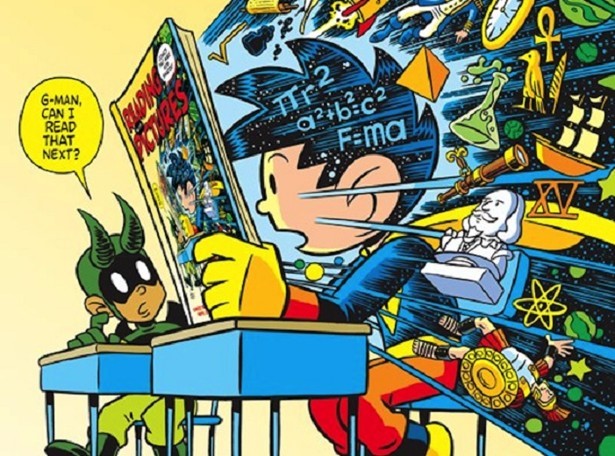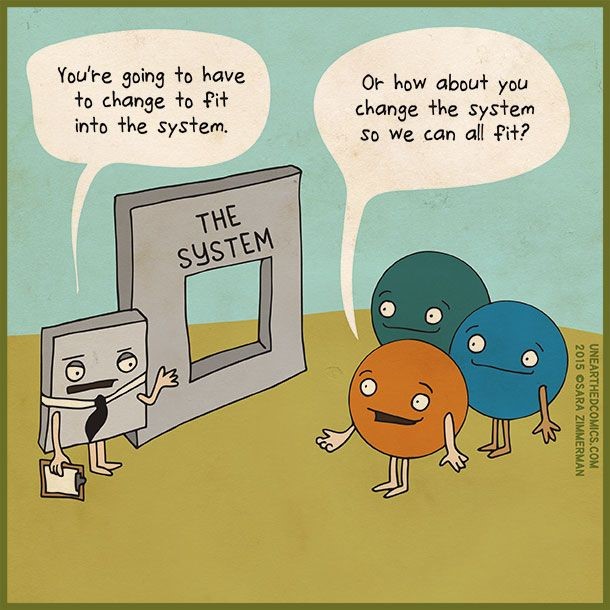Nowadays, more and more teachers bring comic books in the classroom. In this article, you will discover how to use comics to teach in the content areas, where to find the best educational comics, etc. It is time to bring the power of comics to the educational process!
Comics are graphic texts, which combine text content and images in sequence to convey the meanings. Not a long time ago, the comics format has been accepted in educational institutions to teach literacy for different types of readers, advanced readers, and English Language Learners. Comic books have enormous potential in teaching and improving literacy skills. It is a very powerful tool for education which should be used in all educational establishments for all age groups! Comics show the interplay of text and images for better understanding and memorisation of new content. New information is digested more straightforward and faster through the visual nature of comic books.
There are so many different kinds of comic books which teachers can use in the classroom. If you want to speak about such complicated topics as slavery, use comics to make the atmosphere less heavy. You can use the following poverty essay examples for the content and mix them with comics which cover such topics. The interconnection of pictures and words can engage in many different aspects of a student’s mind. You will make students interact with ideas and emotions at the same time. Comics differ from movies, letting the reader move forward at his pace. Students love to take an active part in the experience. In a single image, a student can focus on the significance of tiny details without interrupting the narrative flow. Reading comics, you do not feel that the story has stopped. So all this makes comics to be ideal for both teachers and students.
What are the significant benefits of using comic books in education?
● An excellent tool to visualise knowledge;
● Presents the most essential points;
● Visual graphic with vital information is more comfortable to remember;
● Students are engaged through writing, thinking, and creating;
● Perfect space for writing dialogues;
● Motivate students to improve their writing skills;
● Students learn through storytelling;
● Boost students’ creativity and a higher level of thinking;
● Students learn to develop composition techniques;
● Comics make reading, writing, and thinking more enjoyable;
● It is an excellent assessment/evaluation tool;
● Promotes understanding of a subject.
If you want to explain some complicated scientific processes or maths skills to students, you should use comics. Young people memorise historical events better when they are presented in the form of comics. Students get both linguistic and visual information, which creates a complete picture. Comics can convey not only a big idea but to present many tiny details.
We are used to taking comics as a fun activity, but they can be used in classrooms as a beneficial learning tool.
Reading activity
Comic books can provide quite a narrative experience for international students who just start learning a new foreign language. As a student, you will follow an exciting beginnings/endings, the main characters, time/setting, etc. Such a reading activity does not require any word decoding skills. Comics images will give students contextual clues to the meaning of new words.
Comics can provide excellent learning opportunities for students. Usually, the text is reduced to a minimum to make the content manageable for even beginning-level learners. Teachers have to deal with reluctant readers, and comics are the best motivation for such students. They speak to young people in a language they identify with. Comics are full of satire, symbolism, drama, and humour, which is not the case with a traditional textbook.
Writing activity
Some students read correctly but to write is difficult for them. Many students complain that they have no idea what to write. They have great ideas, but the written language skills block them. Many students prefer to draw a picture rather than to write an essay. Teachers should allow students to use both words and images to express their ideas and way of thinking.
Conclusion
People use pictures to educate and communicate with each other. Even our ancestors used to draw on walls, which is a bit similar to modern comics. Before the printing press was invented, people used to create amazing stained-glass windows in churches and cathedrals all around Europe to educate parishioners. Comics keeps the tradition to inform people through images. Teachers should be motivated to find the right comics material to engage the entire class. They should discover comics, which they are excited to read and to teach, and they can be sure that students will be excited about as well.


